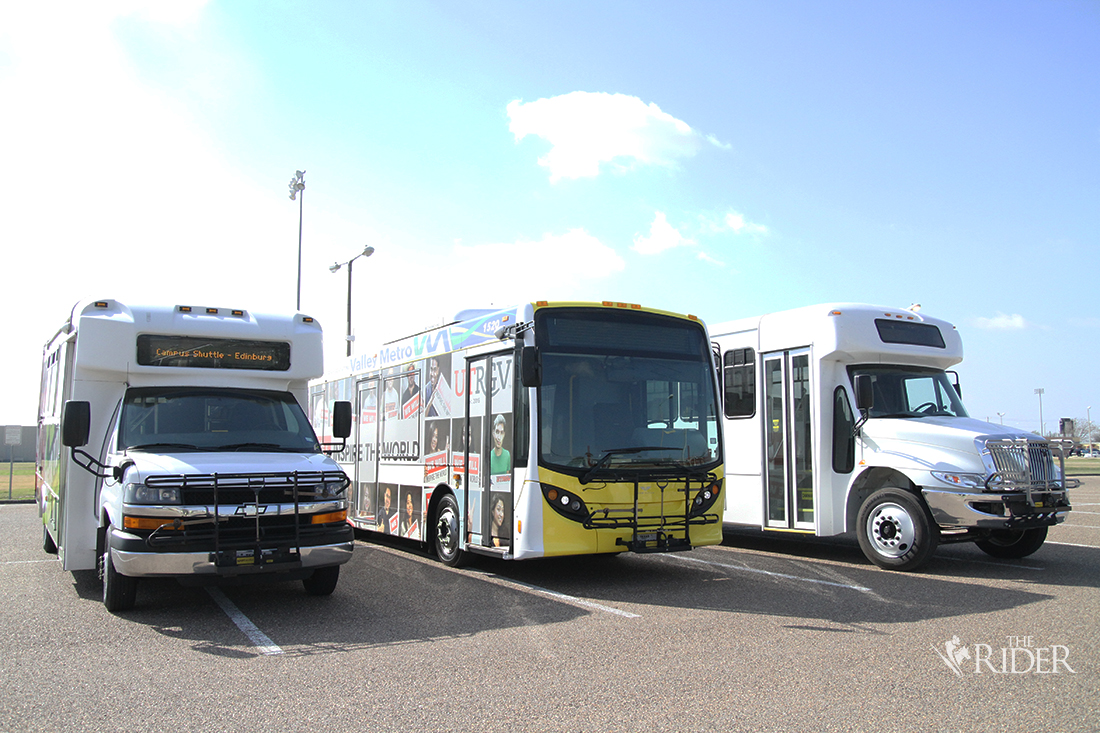
Last semester, the Vaquero Express Connector increased its capacity by 70 percent after obtaining two large shuttle buses with 56 seats each. During the first week of January, the university received two more shuttles with 42 seats each, making the fleet a total of 15.
“We are expecting three more, hopefully, within the next week,” said Rodney Gomez, Parking and Transportation Services director.
The university expected to receive five more shuttles last November from Valley Metro to make the fleet a total of 18. However, Valley Metro has yet to send three more shuttles.
“The delay is that the units are obtained through Valley Metro … so, we rely on them,” Gomez said. “We are just waiting on the other three.”
The university has a contract for transit services with the Lower Rio Grande Valley Development Council, a voluntary association of local governments in Cameron, Hidalgo and Willacy counties.
According to the contract, the university pays $24,000 per fiscal year for the “purchase of service.”
“That amount is what is paid to cover, for example … the one that goes to the Visual Arts Building,” Gomez said. “Valley Metro runs that one. And, it is also to pay for the students riding free on all Valley Metro routes. You know how you only have to show your ID? Students, faculty and staff. That pays for that as well.”
The official schedule for this semester has already been posted in the Parking and Transportation Services official webpage, www.utrgv.edu/parking-and-transportation-services/transportation-services/, and it shows 15-minute differences from last year’s Vaquero Express Connector route.
From Brownsville to Edinburg, the 1:30 p.m. route will now be at 1:45 p.m. The 4:30 p.m. route will be at 4:45 p.m., with a stop in Harlingen at 5:15 p.m., and the 9 p.m. will be at 9:15 p.m.
From Edinburg to Brownsville, the 1:30 p.m. route will be at 1:45 p.m., the 4:30 p.m. at 4:45 p.m., with a stop in Harlingen at 5:30 p.m., and the 7:30 p.m. route at 7:45 p.m.
All other route times remain the same.
“We are going to put the Rio Grande City route,” Gomez said. “We just changed, like, a couple of minutes there, too, but other than that, it’s the same. We wanna keep it consistent.”
He said the department is expecting an increase in ridership because every spring semester they see a “bump” in riders.
The Vaquero Express Connector had 34,564 riders for Fall 2016. In Spring 2017, it had 41,667 riders, increasing ridership by 43 percent. For Fall 2017, the ridership was 59,783, an increase of 73 percent.
“[The additional shuttles] will provide enough seating capacity, and we hope to put those new units into service starting at the end of this month, as soon as we get all the extra amenities, for example, the camera system, and we make sure that the drivers are fully trained,” Gomez said.
The new shuttles will have Wi-Fi available for riders.
“We’re also going to install routers in all the buses, so it will provide more connections for the new buses and more stable internet than the one we’ve had in the past,” he said. “We’ll phase it in starting with the new buses and then slowly will add the additional units as we get new units.”
For more information and special accommodations, email transportation@utrgv.edu.






